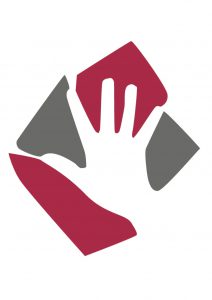CARPAL TUNNEL SYNDROME
This is a condition resulting from the median nerve becoming trapped at the wrist. This nerve is responsible for supplying feeling to the thumb, index, middle fingers and part or all of the ring finger.
WHAT CAUSES IT?
There are a number of causes of carpal tunnel syndrome but in the vast majority of cases the cause is unknown. The carpal tunnel contains the median nerve and 9 tendons. Anything that narrows the tunnel (e.g. wrist arthritis) or causes an increase in the size of the contents of the tunnel (e.g. inflammation of the lining of the tendons) can cause carpal tunnel syndrome. Some common causes of carpal tunnel syndrome include; diabetes, rheumatoid arthritis, under active thyroid gland and pregnancy.
WHAT ARE THE SIGNS AND SYMPTOMS?
The symptoms of carpal tunnel syndrome include tingling, numbness and pain. The tingling or numbness typically involves the thumb, index and middle fingers. The ring finger may or may not be affected. The symptoms are usually a problem at night but in more advanced cases can be a problem during the day, particularly when driving or reading. In severe cases there may be weakness and a feeling of clumsiness when picking small objects. In extreme cases the muscles at the base of the thumb can be wasted.
HOW IS IT DIAGNOSED?
A detailed history and examination is generally enough to establish the diagnosis. You may require nerve conduction studies that can confirm increased pressure on the nerve by measuring the speeds at which impulses travel along the nerve. You may need an Xray to exclude a fracture or arthritis as a cause for the condition.
HOW IS IT TREATED?
In some cases treating the underlying medical condition can improve the symptoms. Failing this, splints holding the wrist in a straight position can be very helpful for night symptoms. Steroid injections can also help reduce the swelling around the nerve. However when symptoms have persisted beyond 6 months or are becoming a problem during the day as well as the night, surgery may become the best option for lasting improvement.
WHAT DOES THE OPERATION INVOLVE?
When symptoms fail to settle with non-operative treatment an operation is generally recommended. This involves releasing a ligament (Traverse Carpal ligament) that forms the roof of the carpal tunnel. By doing this, the pressure on the median nerve is reduced.
The operation is normally performed with the patient awake and the hand numbed. It takes approximately 15 minutes to complete.
AFTERCARE
Following the operation you will normally have a bulky dressing covering your wound for 48hours. This is then replaced with a sticky dressing at 48hours until 10 days following your operation. At 10 days your stitches will be removed.
RETURN TO WORK
This depends on the nature of your work. For a sedentary occupation the average time off work is 2 weeks, for a light manual occupation 4 weeks and for heavy manual work this can be as long as 6 weeks.
DRIVING
It is possible to drive within 6-7 days of your operation but it is normally best to leave this until your stitches have been removed at 10 days.
RETURN TO SPORT
This depends on the intensity of the sport but in most cases a return by 6 weeks is the norm. However more physically demanding sports can require as much as 3 months off.
COMPLICATIONS
Like with any surgery there are a number of small risks associated with this operation.
Infection (1%) is a risk with all surgery. In the majority of cases these are infections around the wound and can be treated with a course of antibiotics. The more unusual deep-seated infections however can require admission to hospital and surgery to clean the wound out if necessary.
Swelling and Stiffness can remain for many months following surgery. It is important to elevate the limb and keep all joints that are not immobilised with a splint, active.
Scar Sensitivity is often a problem with surgery in the hand, particularly the palm. This is often self-limiting and daily massage of the scar can shorten the duration of the symptoms. The sensitivity does settle is all cases with time.
Nerve Injury is a potential but very rare risk with this surgery. Often the nerves at greatest risk are the tiny nerves supplying skin in the area of the wound and cutting through these may result in an area of numbness that is not often troublesome. Injury to the Median nerve itself is extremely rare and can in the worst case, result in permanent weakness or numbness in the hand.
Pillar Pain is the name given to the pain experienced on either side of the scar when pushing on the palm. This often remains until the ligament that has been released heals over. It is the norm for this to settle within 3 months of the operation.
Recurrence is an unusual complication. You may however find that the symptoms recur some time after the original operation having completely settled initially. In this rare event a second operation may be necessary.
Residual Numbness is a problem when the symptoms have been present for a long time prior to the operation. If you have complete numbness in your fingers prior to surgery there is a risk that the feeling may not completely return. This is due to scarring in the nerve from the prolonged pressure. It is important to note however that it can take up to 18 months for the feeling to completely return.
Complex Regional Pain Syndrome is an extremely rare (1%) complication that can follow any injury or surgery to a limb. In this situation the nerves in the arm over-react to the point where the hand becomes very painful, swollen and sensitive. This condition does improve with time but can be problematic for many months (see section on Complex Regional Pain Syndrome).
